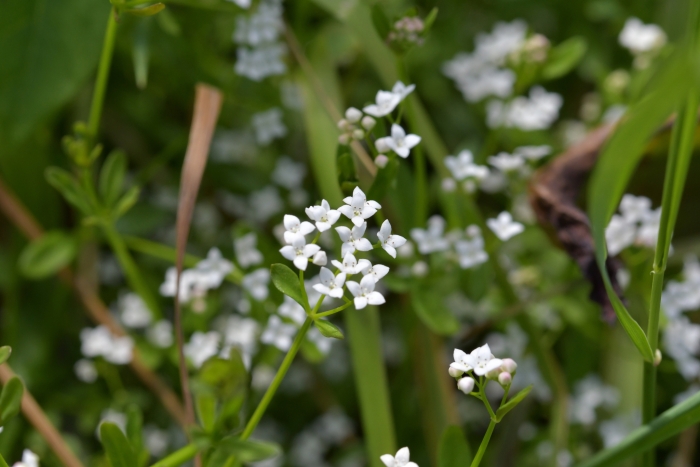Common Marsh Bedstraw
(Galium palustre)
Common Marsh Bedstraw (Galium palustre)
/
/

Christopher Stephens
CC BY-SA 4.0
Image By:
Christopher Stephens
Recorded By:
Copyright:
CC BY-SA 4.0
Copyright Notice:
Photo by: Christopher Stephens | License Type: CC BY-SA 4.0 | License URL: http://creativecommons.org/licenses/by-sa/4.0/ | Rights Holder: Christopher Stephens | Publisher: iNaturalist | Date Created: 2021-01-01T14:56:43-08:00 |


















Estimated Native Range
Summary
Galium palustre, commonly known as Common Marsh Bedstraw or simply Marsh-Bedstraw, is an herbaceous perennial native to a variety of wetland habitats including fens, marshes, wet meadows, and riverbanks across Europe, Morocco, the Azores, Turkey, Turkmenistan, Western Siberia, Greenland, eastern Canada, and parts of the United States. It typically grows to a height of 15-50 cm (6-20 inches) and has sprawling, sometimes erect, stems. The leaves are whorled in groups of 4-6, lanceolate to ovate in shape, and the plant is known for its tiny, white, four-petaled flowers that bloom from June to August. The flowers are not particularly showy but are attractive to a variety of pollinators.
Marsh-Bedstraw is valued for its ability to thrive in wet, challenging conditions where other plants might not survive, making it useful for habitat restoration and erosion control in its native range. It is often used in naturalistic plantings and can be found in water garden settings. It prefers full sun to part shade, consistently moist to wet soil conditions, and can tolerate a range of soil pH from neutral to acidic. While not commonly used in formal garden settings, it can be an interesting addition to wildlife gardens due to its ecological benefits. Care should be taken as it can spread vigorously in suitable conditions and may become invasive outside its native range.CC BY-SA 4.0
Marsh-Bedstraw is valued for its ability to thrive in wet, challenging conditions where other plants might not survive, making it useful for habitat restoration and erosion control in its native range. It is often used in naturalistic plantings and can be found in water garden settings. It prefers full sun to part shade, consistently moist to wet soil conditions, and can tolerate a range of soil pH from neutral to acidic. While not commonly used in formal garden settings, it can be an interesting addition to wildlife gardens due to its ecological benefits. Care should be taken as it can spread vigorously in suitable conditions and may become invasive outside its native range.CC BY-SA 4.0
Plant Description
- Plant Type: Herb
- Height: 1-3 feet
- Width: 1-2 feet
- Growth Rate: Slow, Moderate
- Flower Color: White
- Flowering Season: Spring, Summer
- Leaf Retention: Deciduous
Growth Requirements
- Sun: Full Sun, Part Shade
- Water: High
- Drainage: Medium, Slow
Common Uses
Low Maintenance, Water Garden
Natural Habitat
Fens, marshes, wet meadows, and riverbanks
Other Names
Common Names: Marsh Bedstraw
Scientific Names: , Galium palustre, Galium diffusum, Galium fontinale, Galium glomeratum, Galium glomeratum, Galium incarnatum, Galium masferreri, Galium montanum, Galium palustre f. rupicola
GBIF Accepted Name: